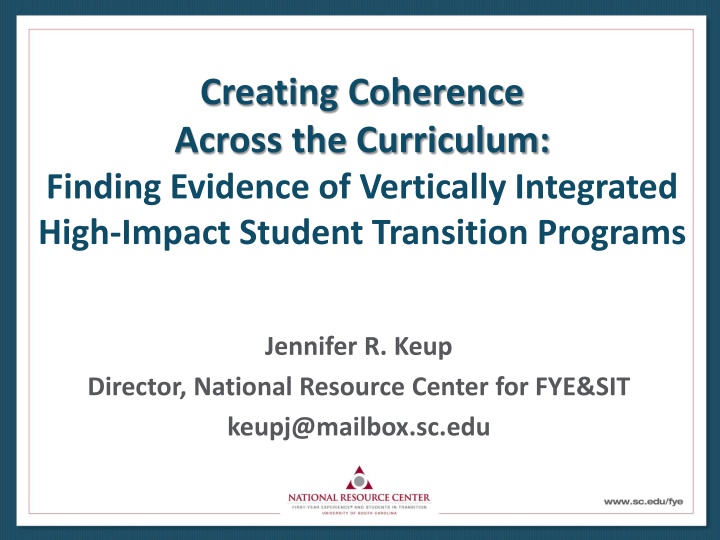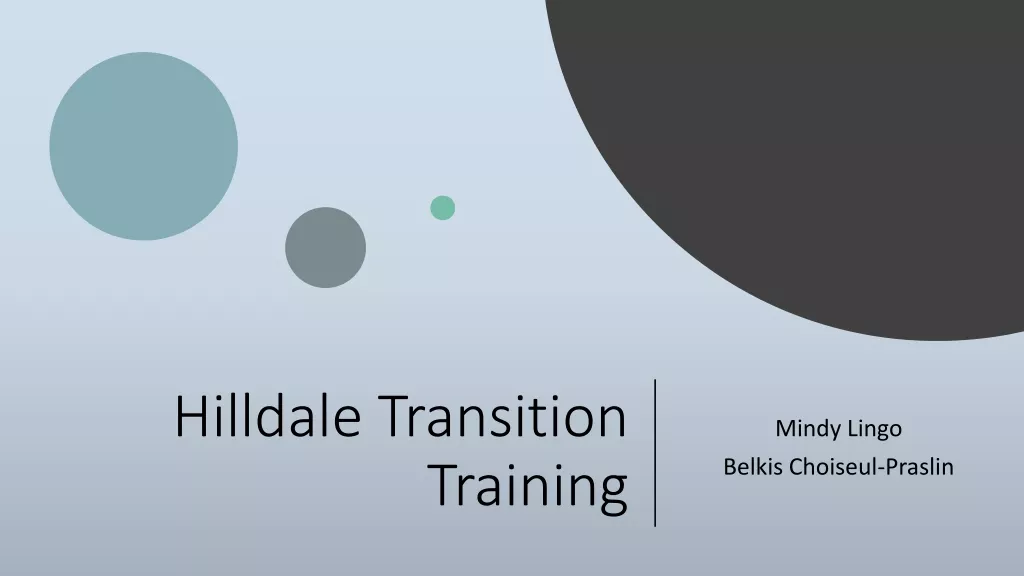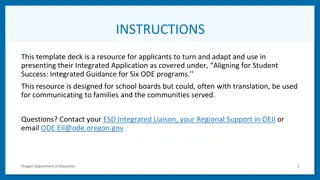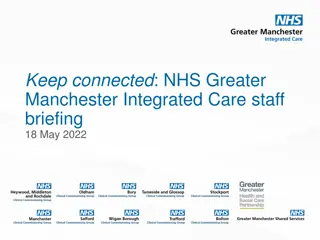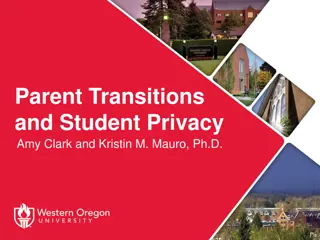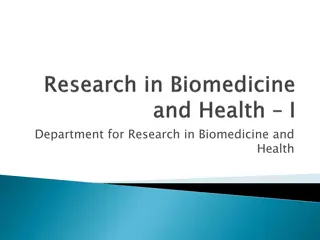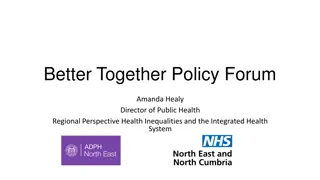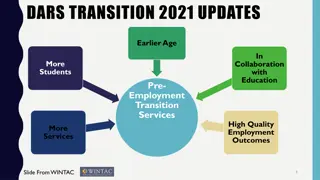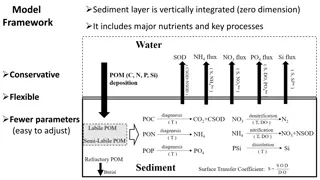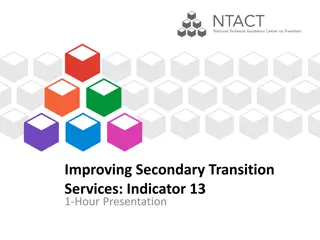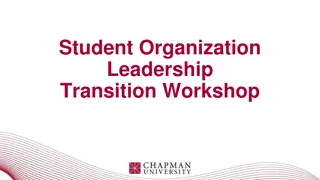Evidence of Vertically Integrated High-Impact Student Transition Programs
This study explores the coherence between High-Impact Practices (HIPs) in supporting undergraduate students. It aims to create a comprehensive institutional approach that streamlines services and enhances student success. The research delves into the connections between various transitional points, interventions, and academic years to conceptualize the collective impact of HIPs. Utilizing national survey data, the study examines the effectiveness of integrating HIPs across the curriculum to enhance student support structures and educational progression.
Download Presentation

Please find below an Image/Link to download the presentation.
The content on the website is provided AS IS for your information and personal use only. It may not be sold, licensed, or shared on other websites without obtaining consent from the author.If you encounter any issues during the download, it is possible that the publisher has removed the file from their server.
You are allowed to download the files provided on this website for personal or commercial use, subject to the condition that they are used lawfully. All files are the property of their respective owners.
The content on the website is provided AS IS for your information and personal use only. It may not be sold, licensed, or shared on other websites without obtaining consent from the author.
E N D
Presentation Transcript
Creating Coherence Across the Curriculum: Finding Evidence of Vertically Integrated High-Impact Student Transition Programs Jennifer R. Keup Director, National Resource Center for FYE&SIT keupj@mailbox.sc.edu
Introduction & Objectives GAP: Literature on HIPs and student success has focused on each year, transition point, or intervention as a separate unit. PURPOSE: Exploring the connections between HIPs toward the creation of a comprehensive and integrated institutional approach to supporting undergraduate students.
Introduction & Objectives RATIONALE: Integrated approaches would: Increase the relevance, accessibility, and effectiveness of institutional support structures for students Streamline the delivery of services and create economies of scale Respond to the call to treat HIPs as a set of effective tools rather than as discrete experiences to conceptualize the collective impact [of] these practices. (Finley & McNair, 2013)
Conceptual Framework Foundations of Excellence for the first-year and transfer experience (Barefoot, Gardner, Cutright, et al., 2005) Undergraduate curriculum Vertical and horizontal alignment in curriculum coherence, learning standards, and educational progression Instructional scaffolding
Methods: Data 2012-2013 National Survey of First-Year Seminars (NSFYS) (N = 896) 90% with a FYS Most common: Extended orientation type of FYS 2014 National Survey of Sophomore-Year Initiatives (NSSYI) (N=778) 47% with a program intentional targeted to second- year students Most common: Academic advising 2016 National
Methods: Data 2016 National Survey of Senior Capstone Experiences (NSSCE) (N = 383) 95% with a capstone Most common: Discipline-based capstone course Limitations Survey items tended to focus on primary HIP method Not the same group of institutions
Methods: Analyses Comparable questions across surveys PURPOSE: 14 items on HIP objective STRUCTURE: 1 on length of time on campus, 1 on proportion of students reached, 1 on administrative unit overseeing the HIP, and 3 on leadership of the HIP ASSESSMENT: 2 items on assessment methods Comparative & descriptive analyses
Results: Purpose Retention & academic skills misaligned [-] Personal development & student-faculty interaction equal & of moderate importance [+] Financial & information literacies were equal but of low importance [n/a] Figure 1. Most Important Objectives: Misaligned 45.0 40.0 35.0 30.0 25.0 20.0 15.0 10.0 5.0 0.0 12-13 NSFYS 14 NSSYI 2016 NSSCE (Develop) academic skills Return rates/retention
Figure 2. Most Important Objectives: Developmentally Aligned [+] 40.0 35.0 30.0 25.0 20.0 15.0 10.0 5.0 0.0 12-13 NSFYS 14 NSSYI 2016 NSSCE Provide orientation to campus resources & services/information Develop study skills Develop support network or friendships Preprofessional/career preparation Develop intercultural competence
Results: Structure HISTORICAL DURATION [+]: The % of the respective HIPs that had been in place for 3 to 10 years was very similar (41% to 42.7%) STUDENT REACH [+]: Majority of institutions report that at least 80% of their target student populations participate in the initiatives and senior capstone experiences and first-year seminars have even higher rates of student engagement
Figure 3. Unit Administering the HIP [-] 45.0 40.0 35.0 30.0 25.0 20.0 15.0 10.0 5.0 0.0 Academic affairs (central office) College or school Academic department(s) Student affairs (central office) Other 12-13 NSFYS 14 NSSYI 16 NSSCE
Results: Assessment HISTORY [+]: Approximately half or more of the institutions responding to the surveys indicate that they have conducted assessment of the initiative METHODS [-]: Several assessment methods were employed for each initiative, but similar patterns of use of assessment methods across high-impact practices did not emerge
Conclusions Potential for developmental alignment of purpose across HIPs Common historical duration and student reach provide structural foundation for connection Administrative oversight is most substantial fixed limitation; requires collaboration Type/method of assessment is a fundamental (but fixable) constraint on alignment across HIPs
